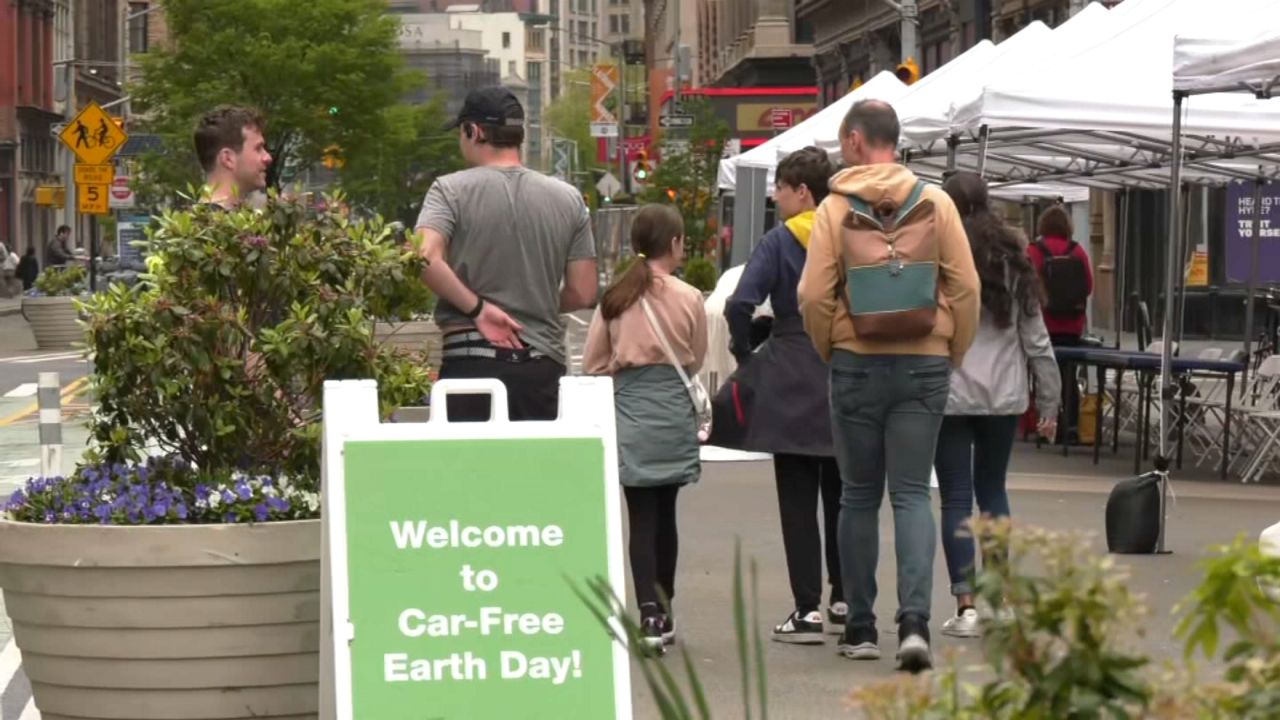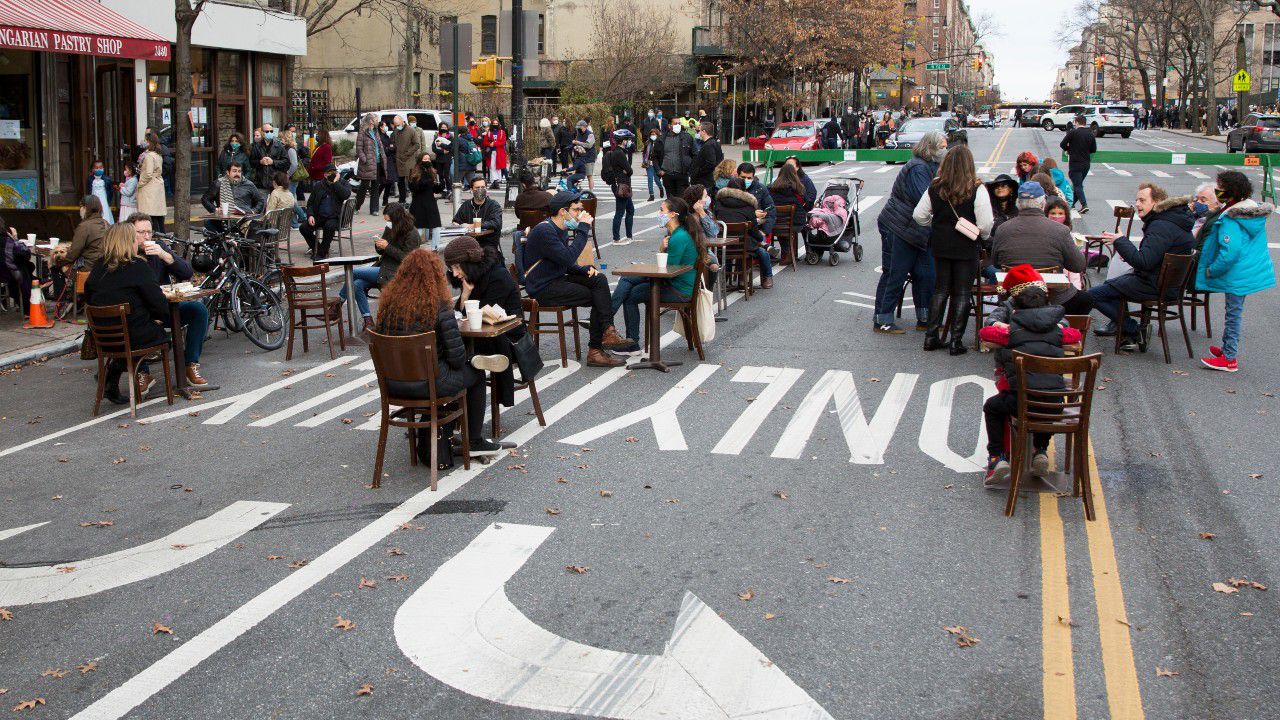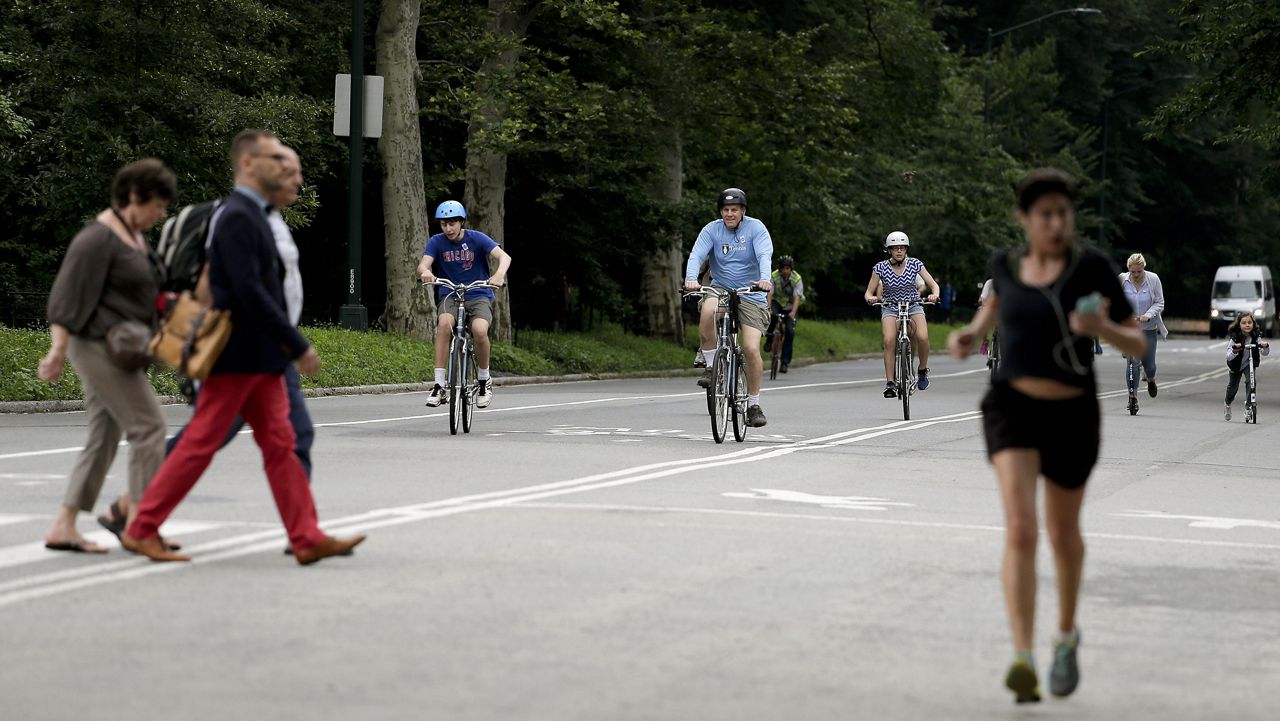The average speed for buses traveling crosstown on 96th Street in Manhattan during rush hour is 5.6 miles per hour.
It’s why New York City’s Department of Transportation said it's proposing a new bus lane for the corridor.
DOT officials said they hope to get it rolled out as congestion pricing begins.
“It will be a great opportunity that we are taking advantage of to redesign 96th Street in a way that the riderships of those buses move through 96th Street quickly and faster,” DOT Commissioner Ydanis Rodriguez said.
Both the M96 and M106 buses share part of their route along 96th Street.
On the west side of Central Park, the design is pretty straightforward and similar to the bus lanes on 21st Street in Queens and on Lexington Avenue.
The bus lane through most of the west side corridor will be offset, meaning there will be a parking lane, bus lane and regular traffic lane.
On the east side, the bus lane moves on and off the curb throughout the stretch.
Serving nearly 15,000 daily riders, some believe a dedicated bus lane would shorten their commutes.
“There's definitely a lot of traffic — makes it really inconvenient to ride public transportation,” M106 bus rider Shawn Frost said. “I know for me, sometimes it is better to get off the bus and walk to your destination. So I think instituting the bus lane for sure would speed up traffic.”
Others are hoping if buses are able to move through their routes quicker, wait times will be shorter and buses will be less crowded during peak travel times.
The DOT is also creating left turn lanes and limiting left turns along the stretch to improve traffic flow and pedestrian safety.
The agency is looking to add queue jumping signals at certain intersections along 96th Street to give buses a head start to bypass traffic.
Proposed implementation of this design is scheduled for this summer.









)